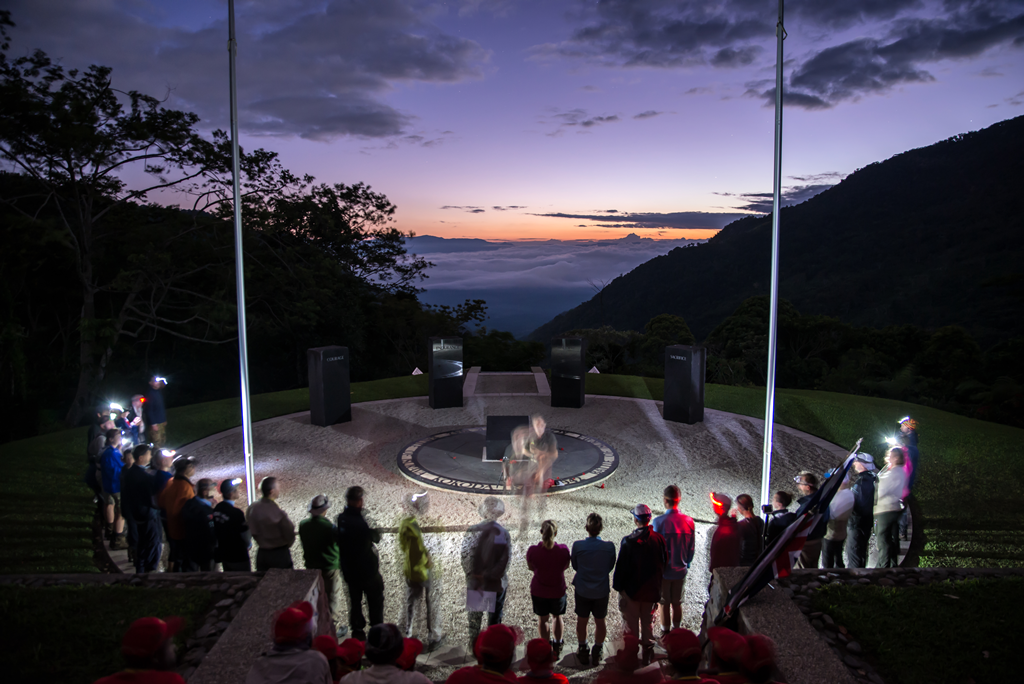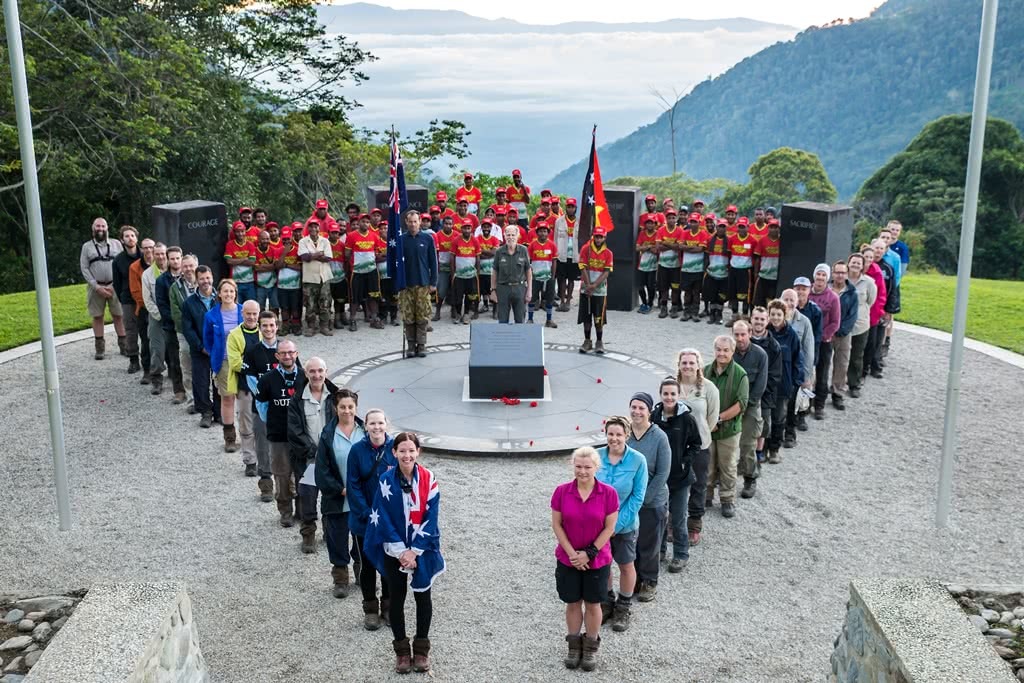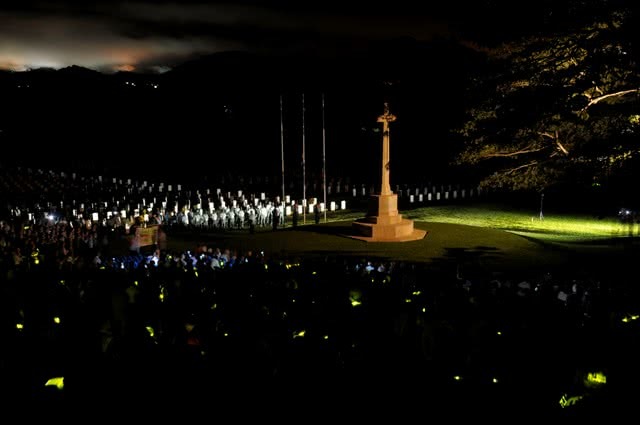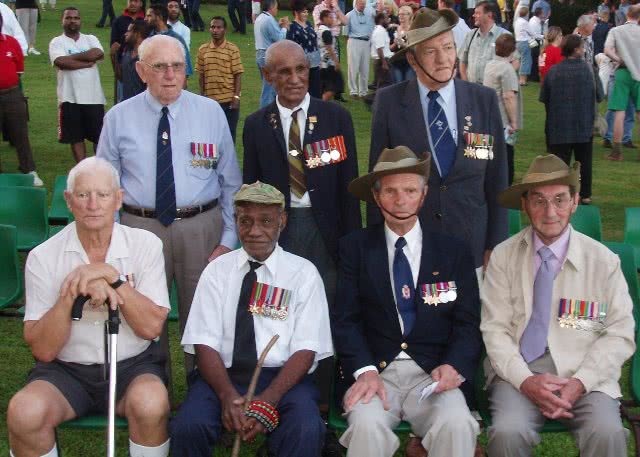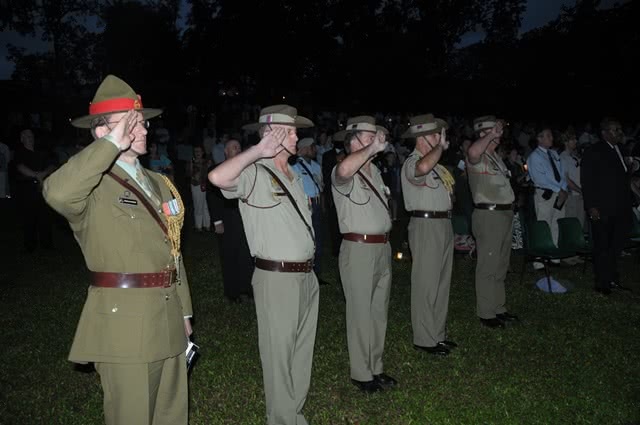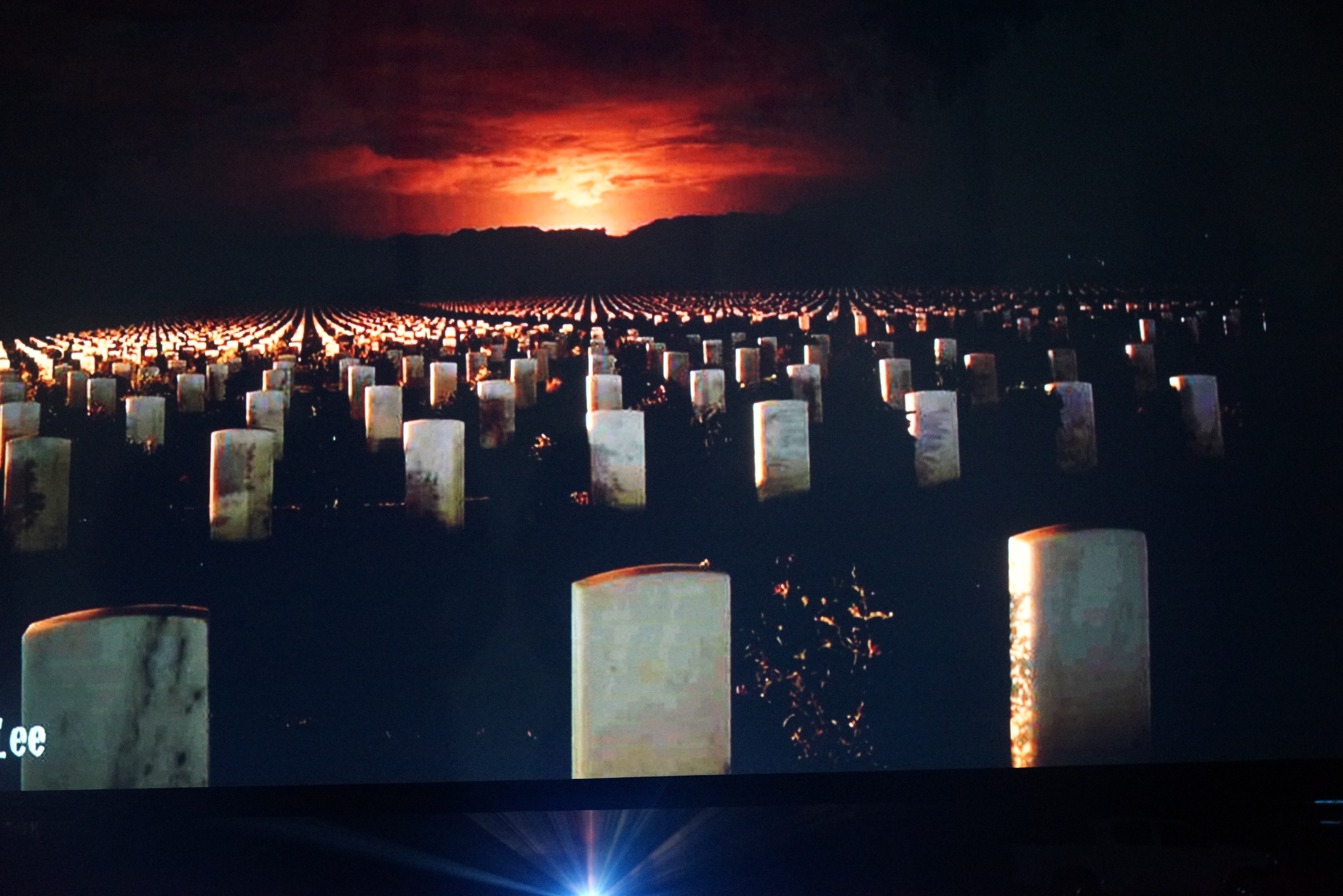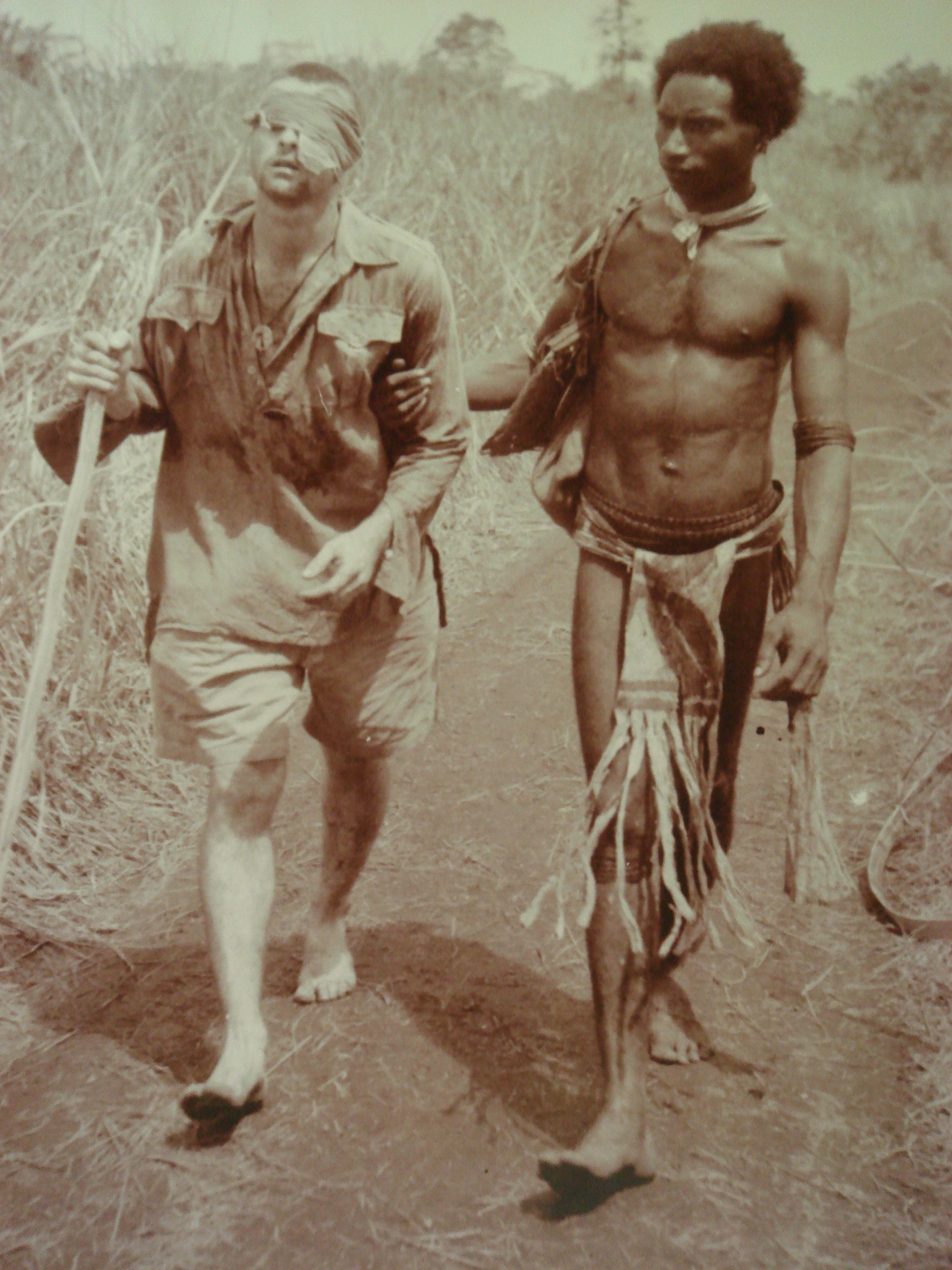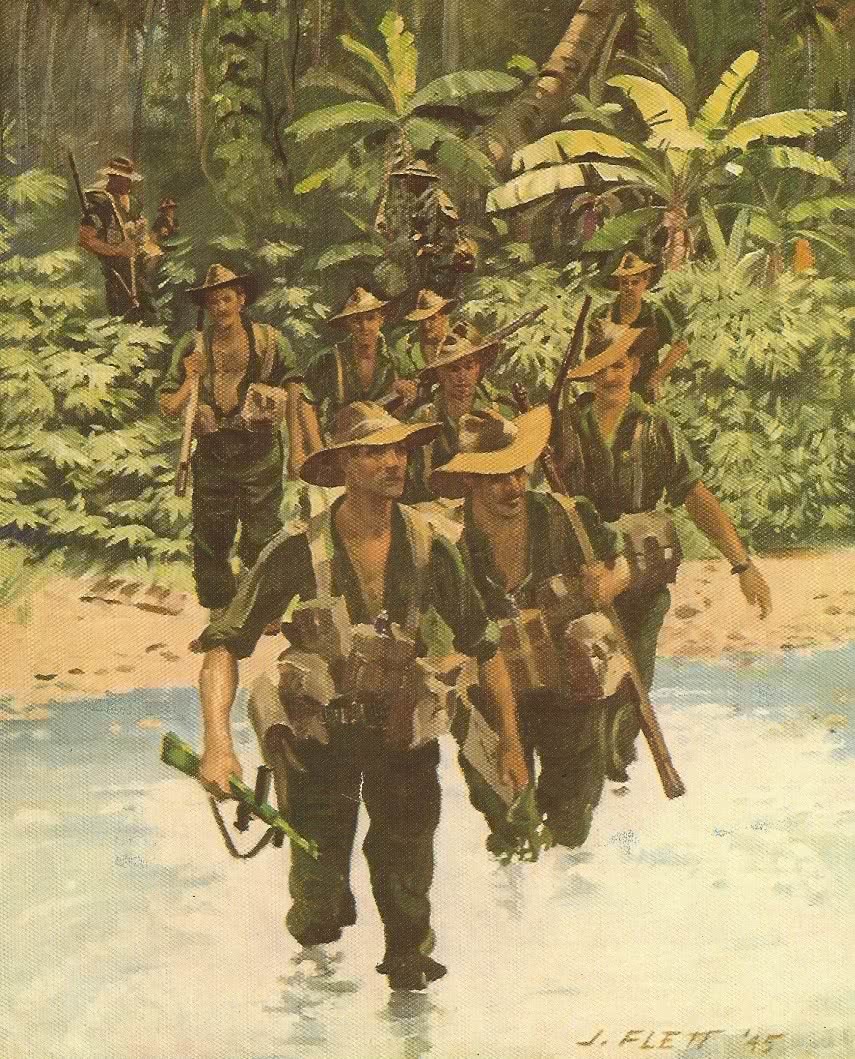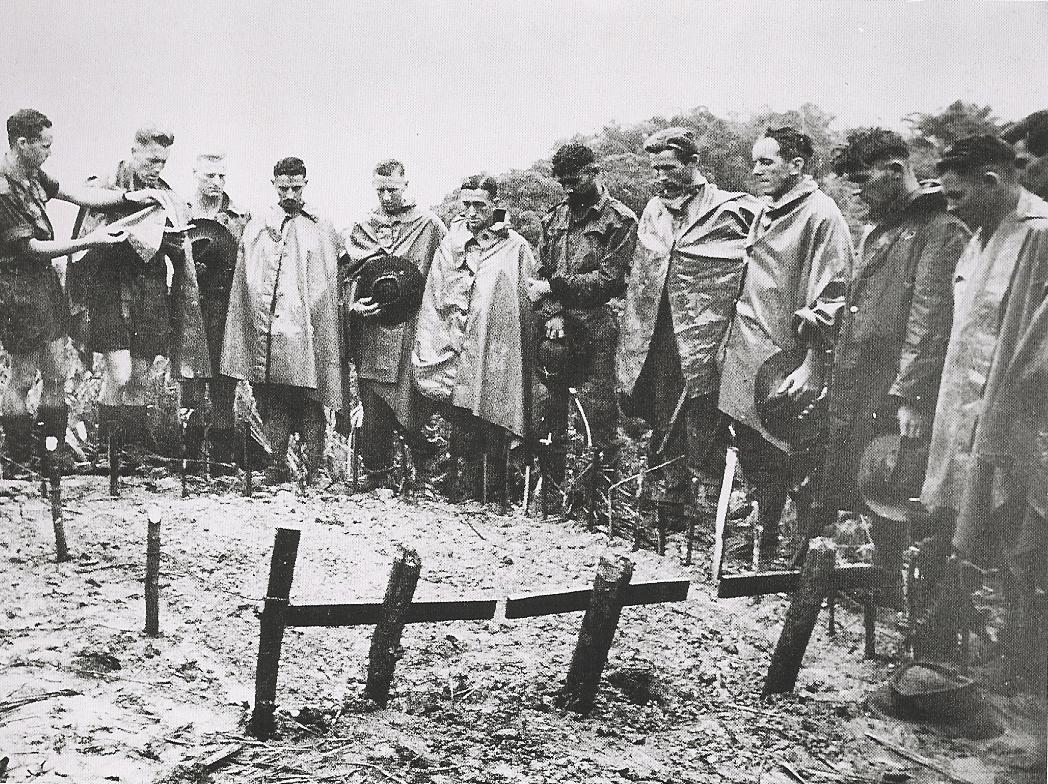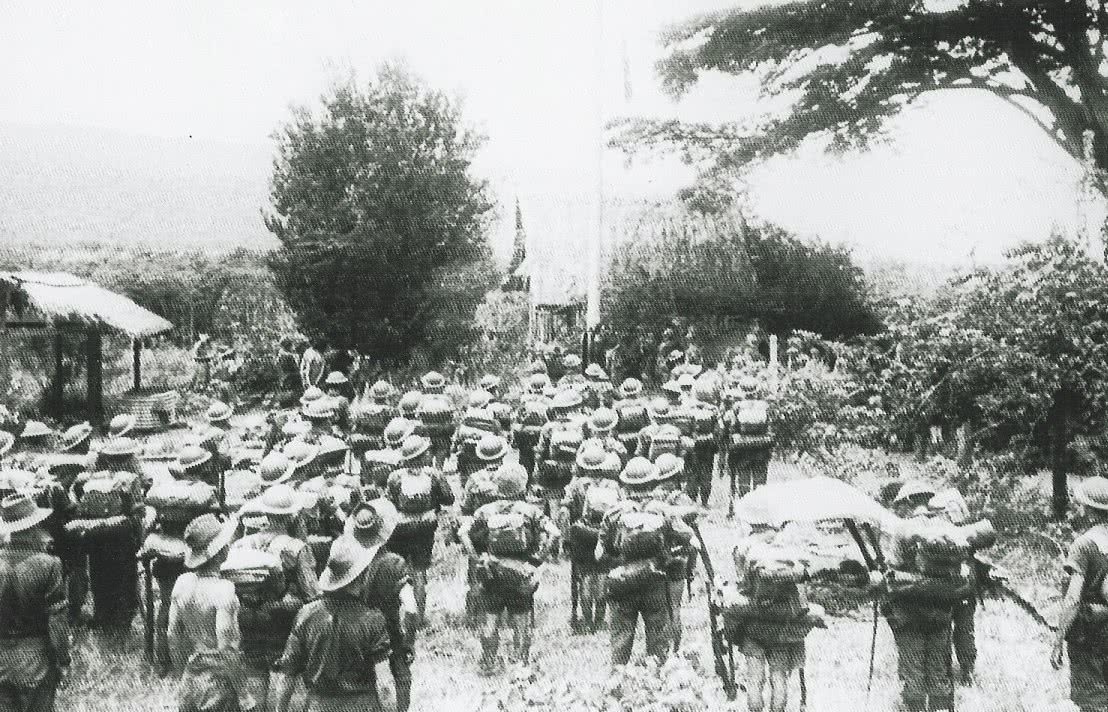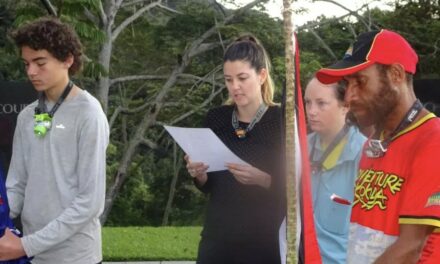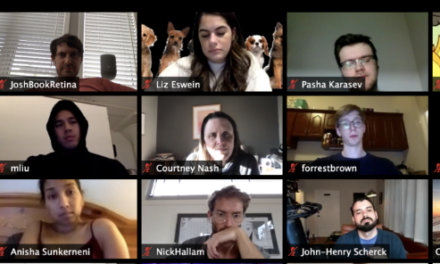The Kokoda Trail has the potential to be a high-value, world-class pilgrimage tourism destination capable of providing a sustainable economic future for traditional communities who own the land sacred to our share wartime heritage.
Executive Summary
The era of ‘magic pudding marketing‘ for Kokoda is over if PNG is serious about achieving its potential as a world-class pilgrimage tourism destination!
PNG now has two choices for wartime tourism beyond the Covid-19 pandemic – it can continue to operate as a third-world destination with third-world management systems and third-world campsite facilities – or it can develop a marketing strategy aimed towards becoming the wartime piglgrimage destination of choice for high value international trekkers.
It’s not about money – Kokoda is already sustainable. It’s not about meetings, forums and workshops – nothing has been achieved from these for more than a decade. It’s about vision, understanding, leadership and commitment.
Kokoda is almost the complete adventure experience for Australian baby-boomers and young adventurers. It requires physical stamina and mental tenacity. The wartime history evokes strong emotions. The unconditional care and support of local PNG guides and villagers is humbling. The environment is rugged, remote and pristine.
Preamble – Wartime Tourism
Wartime tourism is unique because it unites people who were once divided. It provides an avenue for the establishment of empathetic relationships between trekkers and tourists of various nationalities and subsistence villagers who are the guardians of sites sacred to Australia, the United States and Japan.
The potential of the Kokoda trekking industry and the benefits that will accrue to local villagers along the trail is currently limited by the lack of a professional management authority supported by appropriate legislation.
The potential of a wartime tourism industry is currently limited by the lack of an effective strategy and an inappropriate organisational structure.
If we procrastinate and allow land sacred to our shared wartime heritage to be lost to alternative economic opportunities in PNG (mining, forestry, farming) subsequent generations will never forgive us.
If we allow the management to continue as it has over the past decade the only growth industry will be conflict management.
But if we use the lessons we have learned since the 50th anniversary of the Kokoda campaign that put ‘Kokoda’ on the radar we will be limited only by the imagination of current and future generations who seek to walk in the footsteps of our Kokoda veterans.
PNG Wartime Pilgrimage Tourism
The most relevant guide to the potential of a wartime tourism industry in PNG is the continued growth in the number of Australians making the pilgrimage to Gallipoli and battlefields in Europe together with increasing interest in the Australian War Memorial in Canberra.
Each year up to 9,000 Australians visit the Dawn Service at Anzac Cove. Thousands more visit it at other times of the year. It is now becoming a pilgrimage for more than a million Turkish people also visiting Gallipoli each year.
It is worth noting that PNG is closer, safer, cheaper and more significant to current and future generations of Australians because ‘at Gallipoli we fought for Britain and lost – at Kokoda we fought for Australia and won!’
In 2017 1.2 million people visited the Australian War Memorial – this included 145,927 school children. Media coverage extended to 24.4 million people on Anzac Day – 38,000 attended the Dawn Service. Their website recorded 5.6 million visits and they have 100,000 followers on Facebook.
Two of the key objectives we wished to achieve when we proposed the establishment of a management authority for the Kokoda Trail in 2002 were:
- To establish ‘Kokoda’ as a model for a sustainable wartime tourism industry in PNG; and
- To ensure villagers along the trail received shared benefits from the emerging Kokoda trekking industry.
Papua New Guinea has the potential to be a world class ‘adventure-tourism’ destination but it has to address negative perceptions in regard to safety and reliability – particularly after the ‘Black Cat Track’ murders; the assault and rape of a female American trekker on the Kokoda Trail; and ongoing threats to close the trail. This will require a focused investment in national marketing and support for the development of niche adventures such as wartime pilgrimages, eco-trekking, white-water rafting, caving, diving, surfing, game-fishing, bird-watching, and culture.
People who participate in these niche adventure activities are generally more aware of the sensitivities of culture and environment and do not expect 5-star accommodation and service. They are also more tolerant of ‘surprises’ that are often experienced in the ‘land of the unexpected’.
Recent interest in wartime tourism indicates that it has significant potential as a niche industry for PNG tourism. This is evident in the rapid increase in the number of trekkers since the 50th anniversary of the Kokoda campaign in 1992.
‘Kokoda’ is almost the complete adventure experience for Australian baby-boomers and young adventurers. It requires physical stamina and mental tenacity. The wartime history evokes strong emotions. The unconditional care and support of local PNG guides and villagers is humbling. The environment is rugged, remote and pristine. The battles fought along the trail have become folklore in Australia – a place of pilgrimage like Gallipoli, Villers-Bretonneux, Sandakan, Passchendaele[i].
Beyond Kokoda are wartime adventures in Rabaul, Milne Bay, Buna, Gona, Salamaua, Nadzab, Lae, Finchafen, the Finisterre Ranges, Death Valley, Shaggy Ridge, Madang and Wewak. These are not only different battlesites – they are inhabited by different cultures with different traditions that create a smorgasbord of opportunity for wartime tourism.
The opportunity is not restricted to trekkers. It has the capacity for wartime cruises to Port Moresby, Milne Bay, Lae, Madang, Wewak, Aitape, Manus, Rabaul, Bougainville and the Solomon’s. Imagine an Anzac Dawn Service at Owers Corner; a showcase of PNG culture along Ela Beach; a ‘Beating-of-the-Retreat’ at Bomana War Cemetery followed by a 7-day Pacific War Cruise to each of the significant coastal/island battlesites.
The most important challenge for PNG is to develop a sustainable model that can be applied to each area. The development of the Kokoda trekking industry provides a timely opportunity for a case study as the basis for developing a successful model for wartime tourism.
Relevant Facts for the Kokoda Tourism Industry
- During the period 2004 – 2008 trekker numbers increased by 255% from 1584 to 5621.
- During the period 2009 – 2018 there was an overall decline of 46% in trekker numbers from 5621 to 3033[ii].
- The average number of trekkers for the past three years (2016-2018) is 2945.
- According to the KTA website there are 37 licensed trek operators[iii] – 20 of these did not lead any trekkers across the trail in 2018.
- A lack of integrity in the licensing system resulted in 15 unlicensed trek operators leading treks across the trail in 2018.
- There is no incentive for licensed trek operators to invest in the industry due to the lack of integrity in the licensing system and the lack of management of peak trekking periods.
- Peak periods occur during the Anzac and school holiday periods.
- There is no protection for the welfare of PNG guides and carriers engaged by trek operators.
- There are no protocols to ensure campsite owners are paid the recommended fees.
- There is no effective ranger system.
- There is no trek itinerary management system.
- There is no campsite booking system.
- There is no campsite development system.
- There is no trail maintenance plan.
- There is no management database.
Military Heritage
KTA records indicate that Australians are motivated to trek across the Kokoda Trail because of the wartime historical significance of the Kokoda campaign. On each key anniversary the following increases were recorded from the previous year:
- 65th anniversary (2007): 37% increase.
- 70th anniversary (2012): 23% increase.[iv]
- 75th anniversary (2017): 22% increase.
These increases are in spite of the fact that the Australian Government has not built a single memorial across the trail since it assumed control of the Kokoda Trail in 2009[v]. Of more concern is their ongoing refusal to engage an accredited military heritage architect to develop a Master Plan to protect, honour and interpret the Kokoda campaign across the trail between Owers Corner and Kokoda[vi].
The wartime significance of the Kokoda Trail is reflected in reviews on TripAdvisor which lists the Kokoda Trail as the most popular tourism destination in PNG – this is despite the 46% decline in trekker numbers since the Australian Government assumed control of the industry in 2009.
One can only imagine how much more popular Kokoda would be if interpretive memorials were developed at each battlesite along the trail; local villagers were involved in re-enactments; and it was properly promoted as a wartime pilgrimage.
Key Stakeholder Needs
There are only two key stakeholders in the Kokoda Trekking Industry – trekkers who pay for their pilgrimage across the trail and the owners of the land they trek across. All others – the Kokoda Initiative; the KTA, PNG Tourism; Government departments; trek operators – are ‘interested parties’.
1. Trekker Needs
Trekkers are paying customers/clients – without them there would be no trekking industry; no employment for guides and carriers; no shared benefits for village communities; and no future apart from the scourge of welfare/aid dependency. It is therefore essential that trekker needs be identified and met.
In the first instance trekkers are not motivated to trek Kokoda in search of an ‘environmental levitation’ or a ‘cultural awakening’ – they are motivated by the physical challenge of walking in the footsteps of our Kokoda veterans and learning about the wartime history of the Kokoda campaign. Increasing numbers of trekkers during each significant anniversary are testament to this fact.
An appreciation of the pristine environment of the Owen Stanley Ranges; the culture of the Koiari and Orokaiva villagers who live along the trail; and an awareness of the opportunities for adventure travel in PNG are outcomes of their Kokoda experience.
Trekkers’ needs are essentially basic – they want to be safe; they want to be informed; they want to experience the natural environment and traditional culture; they want to maintain a discreet integrity within their trek groups; and they want clean ablution facilities.
2. Landowner Needs
Traditional owners of land sacred to our shared wartime heritage are the major shareholders in the Kokoda trekking industry. They must therefore be consulted on a continuous basis; they must receive their fair share of economic and social benefits; they must be engaged in value-adding opportunities; and they must be assured of a sustainable economic future for their children and local communities.
Key Considerations for a Marketing Strategy
The following factors should be considered in the development of an effective marketing strategy for the Kokoda Trail.
- ‘Kokoda Trail’ is the name of the Battle Honour awarded to the Papuan Infantry Battalion by the Commonwealth Battles Nomenclature Committee in 1953;
- ‘Kokoda Trail’ was the name recommended by the PNG Geographical Place Names Committee, adopted, and gazetted by the PNG Government in 1972;
- The Kokoda Trail is a 138 km trek across the Owen Stanley Ranges between Owers Corner and Kokoda;
- The Kokoda campaign was a series of battles fought across the trail between Owers Corner and Kokoda during the period 29 July – 3 November 1942;
- Kokoda is the only wartime pilgrimage in the world where trekkers experience reality in the form of personal deprivations; physical challenges; emotional linkages and group camaraderie.
- Increases in trekker numbers during significant anniversary periods indicates that the wartime historical significance of the Kokoda campaign is the reason they commit to the pilgrimage – just as they do for Gallipoli and Anzac battlefields in Europe.
Military Heritage Master Plan
The development of a Military Heritage Master Plan to protect, honour and interpret significant sites at Owers Corner, Imita Ridge, Ioribaiwa Ridge, Nauro, Menari, Brigade Hill, Lake Myola, Templeton’s Crossing, Eora Creek, Abuari, Deniki and Kokoda is an essential requirement for the development of the Kokoda Trail as a unique World class wartime tourism destination[vii].
Such a plan should be developed by an accredited Military Heritage Architect advised by a military historian who is expert on the Kokoda campaign.
Marketing Strategy
The most effective strategy for 2019 and beyond is to focus on two national days of commemoration i.e. Anzac Day and Kokoda Day.
1. Anzac Day
Anzac Day is the anniversary of the landing of Australian and New Zealand troops at Gallipoli on 25 April 1915. The day now commemorates all armed conflicts since then.
The annual Anzac Dawn service at Bomana War Cemetery is well organised by the Port Moresby RSL and attracts a large crowd which includes an increasing number of Papua New Guineans in recent years.
Consideration should be given to developing the Anzac Dawn Service as a joint RSL-PNG service through the inclusion of a PNG commemorative segment and the development of a ‘Spirit Haus’ as a cenotaph[viii].
Until now there has never been any formal recognition of the wartime carriers, affectionally known as ‘fuzzy-wuzzy angels’ – no honour roll, no certificate, and no medal!
Whilst they were not enlisted servicemen they were conscripted and served at the front. There was no difference between an army stretcher bearer and a native stretcher bearer on the Kokoda Trail – they faced the same conditions and the same risks.
Anzac Day is the anniversary of the landing of Australian and New Zealand troops at Gallipoli on 25 April 1915. The day now commemorates all armed conflicts since then.
The annual Anzac Dawn service at Bomana War Cemetery is well organised by the Port Moresby RSL and attracts a large crowd which includes an increasing number of Papua New Guineans in recent years.
Hundreds, perhaps thousands of PNG native stretcher bearers lay in lonely unmarked graves across the Owen Stanley Ranges. Their identities are unknown. There is no Honour Roll to record their service. They have no spiritual resting place or Spirit Haus for their families, friends or kinfolk to gather round each year to commemorate their sacrifice. There is no research into who they were? Where they came from? How they died? Or where?
We can begin to rectify this historical anomaly by including a commemorative segment in our Anzac Dawn Service and engaging a heritage architect to design an appropriate ‘Spirit Haus’. A commemorative segment would involve a re-enactment by PNG students acting as stretcher bearers. They would assemble along the front of the headstones to the rear of the Stone of Remembrance in the pre-dawn darkness. As the first glint of sunlight strikes the white granite headstones in the pre-dawn darkness they would raise their stretchers onto their shoulders and walk silently past the polished marble headstones towards the Cross of Sacrifice – to the solemn beat of traditional kundu drums.
This would symbolise the passing of their spirits through those they tried to save.
On arrival in a designated area near the Cross of Sacrifice they would lay their stretchers down, turn inwards and bow their heads where they would remain as a ‘catafalque party[ix]’ for the duration of the service.
The inclusion of this segment would attract national media coverage in Australia and PNG.
Spirit Haus
The inclusion of a ‘Spirit Haus’ as a cenotaph within the small vacant area to the rear of the Guest Register (approximately 20m X 20m) at Bomana War Cemetery would finally provide a spiritual resting place for the wartime carriers whose remains have never been found.
The Spirit Haus would be protected by PNG guards in traditional costumes who would tell the story of the wartime carriers and recite the poem ‘Fuzzy-Wuzzy Angels’ by Sapper Bert Beros on request. It would soon become a popular magnet for tourists and photographers.
Our fighting elements included Australian army, navy and air force units, the Australian New Guinea Army Unit, the Papuan Infantry Battalion, coast-watchers and wartime carriers. All except the wartime carriers have been officially recognised.
The inclusion of a commemorative segment and a ‘Spirit Haus’ at the Anzac Dawn Service at Bomana would close the loop on those we commemorate and would be a great source of pride for PNG citizens and would be a valuable contribution to the principle of Commemoration in Perpetuity.
2. Kokoda Day
On 3 November 1942 the Australian flag was raised on the Kokoda plateau after a desperate jungle war fought across the Owen Stanley Ranges. It represented the turning of the tide in the war against Japan.
It was a war that Australian was unprepared for in 1942. Our faith in ‘great and powerful friends’ coming to our aid in the event of Japan entering the war was shattered with the fall of Singapore in December 1941. The secret deal between Prime Minister Winston Churchill and President Franklin D. Roosevelt that gave priority support to the United Kingdom at the expense of Australia and the South West Pacific was a betrayal.
The defence of Australia and its territories of Papua and New Guinea were thus dependent on untrained militia forces and a small band of New Guinea Rifles as our experienced AIF units were returning from Europe and the Middle East to meet the new threat.
Resources were so scarce in New Guinea that young Papua and New Guinea men in remote mountain villages were forcibly recruited to support the war effort. Many had no understanding of the war and were conscripted against their will. They were told that men from Japan were their enemy. For many of these men other villagers living in remote tribal lands were also considered ‘enemy’. One can only imagine the fear and uncertainty they felt as they were forcibly marched away from their families and clans.
They were designated as Carriers but were to become known as ‘fuzzy-wuzzy angels’ because of their selfless sacrifice in assisting wounded and sick diggers during the various campaigns.
They carried vital war supplies on their bare shoulders in endless lines over hostile and inhospitable terrain. Modern day trekkers are in awe of their efforts. Without this vital link in the chain of our war effort Japan would have been successful in their conquest of New Guinea.
Today, 75 years after the Pacific War, they are the only link in the remembrance chain not to have received any official recognition. Many claim they were not properly paid. None were ever issued with a medal. No day has been set aside to commemorate their service or sacrifice. No Roll of Honour has been prepared to record their names.
The recent upsurge in interest in the Kokoda campaign by Australian trekkers indicates there is a strong desire for our wartime links with Papua New Guinea to be recognised. This can be achieved by providing them with an incentive to visit, or revisit the country.
The proclamation of ‘Kokoda Day’ on the anniversary of the day our Australian flag was raised on the Kokoda plateau would be a fitting tribute to their service and sacrifice.
Kokoda Day would involve a re-enactment of the flag raising each year. It would include a sing-sing with traditional Orokaiva dance groups and an annual rugby league match between the Koiari and Orokaiva in the afternoon.A ‘Kokoda Day’ flag raising ceremony would also be held in every school in PNG to inform students of the contribution their forefathers made in defence of Papua and New Guinea from 1942-1945.
A sunset ‘Beating of the Retreat’ service could be held at Bomana War Cemetery.
The Kokoda Day Flag Raising Re-Enactment would attract national television coverage throughout Australian and PNG as well as newspaper articles on the historical significance of the day. It would be the main topic on social media sites.
Owers Corner
Owers Corner has the potential to become the most visited tourism destination in Papua New Guinea because of its wartime historical significance; its road access to the nation’s capital; and its access to electricity.
The precinct could include a replica village featuring Koiari tree-houses; a granite memorial wall with famous images from the Kokoda campaign; interactive stations with maps for each of the battle-sites along the trail; interpretive panels, stalls for local landowners and an outside theatre for the performance of traditional dances.
It could include a Visitor’s Centre based on the design of the Indigenous Centre at Mossman Gorge.
Such a development would also see the establishment of a sustainable day-trekking industry with short guided treks down to the Goldie River and/or up to Imita Ridge and back.
The economic future of the Owers Corner community would be assured with such a development.
Word-of-Mouth Marketing
Over the past decade more than 46,000 Australian trekkers have trekked across the Kokoda Trail. If each of these trekkers relate their experience to 50 people (a very conservative estimate) the reach is at least 2.5 million.
Our anecdotal evidence suggests that the most discussed topic is the comparison between how they did it and how the diggers did it. A review of TripAdvisor indicates that the quality of the military history presentations they receive is an important emotive factor in their motivation to respond.
The most negative aspect of Word-of-Mouth Marketing for Kokoda is the disgusting condition of the toilets across the trail. This is a sensitive issue for female trekkers in particular and would be a major deterrent to their friends committing to a trek. This is probably the major factor in the decline of trekker numbers over recent years.
This is a management issue that requires urgent resolution to ensure the maximum value is obtained from Word-of-Mouth marketing.
Media Interest – Kokoda
Media interest in Kokoda began in 1992 with when former Prime Minister, Paul Keating attending the 50th anniversary Dawn Service at Bomana War Cemetery. Keating was the first Australian Prime Minister to visit Kokoda since the war. Subsequently, in 1996 Channel 9’s A Current Affair program screened a Kokoda documentary, featuring celebrities including Angry Anderson. This program attracted almost 3 million viewers, and recorded as the most viewed for many years.
On the 60th anniversary of the Kokoda campaign, former Prime Ministers, John Howard (Australia) and Sir Michael Somare (Papua New Guinea) opened a memorial at the Isurava battlesite. This generated domestic and international publicity. During this period all major newspapers and magazines ran feature articles on the Kokoda campaign, and the stories of trekkers. This coverage resulted in a dramatic increase in trek tourism as more tourists sought the challenge of walking in the footsteps of our Kokoda veterans.
As a result of comprehensive media coverage between the 50th and 60th anniversaries (1992 – 2002) ‘Kokoda’ now has equal billing with ‘Gallipoli’ and ‘Anzac’ for marketing value.
Social Media
Mainstream media has well covered the historical aspects of the Kokoda campaign together with treks by television celebrities, politicians, sporting teams and youth groups. Their only interest in Kokoda in the foreseeable future would be in the death or injury of a trekker, a serious incident or the closure of the trail.
Social media should therefore be the primary focus of a successful marketing strategy.
The development of a professional website for the Kokoda Trekking Industry and an active social media campaign are essential marketing tools for 2019 and beyond.
The website should have provision for relevant documentaries on the Kokoda campaign; an active blog; informative newsletters; trekker surveys; a database; and links to other adventure activities in PNG.
Accurate information i.e. the official name ‘Kokoda Trail’, correct distances and maps should be provided to Google, Wikipedia, TripAdvisor, Facebook, Instagram, and Lonely Planet.
Regular e-newsletters should be distributed to the Australian War Memorial, the RSL, Battalion Associations, Business Councils, Education Departments, schools, colleges, universities and traditional media organisations.
Kokoda Smartphone Coverage
The recent announcement of a roll-out of new electricity infrastructure to provide power to 70 percent of PNGs population by 2030 will eventually lead to the introduction of smartphone technology in areas such as the Kokoda Trail. Australia has agreed to provide $25 million for broadcast services in its first year.
Smartphone coverage across the Kokoda Trail will have a profound impact on tourism wen it is established – trekkers will be able to track their progress along the trail and provide up to date reports to families and friends via social media.
Conclusion
Annual trekker statistics over the past decade indicate that PNG Tourism has a clear choice for the Kokoda trekking industry.
It can continue to operate as a 3rd World destination with 3rd World management systems and 4th World campsite/toilet facilities or it can develop a strategy to become the wartime destination of choice for 1st World trekkers.
It’s not about money – Kokoda is already sustainable.
It’s not about meetings, forums and workshops – nothing has been achieved from these for more than a decade.
It’s about vision, leadership, decision-making and commitment.
Recommendations
The following recommendations are offered for the development of an effective marketing strategy for the Kokoda Trail:
- Develop a Military Heritage Master Plan to protect, honour and interpret significant sites along the Kokoda Trail.
- Develop the Anzac Dawn Service as a joint RSL-PNG service through the inclusion of:- a PNG commemorative segment and
- – a ‘Spirit Haus’ as a cenotaph[x] to provide a spiritual resting place for the wartime carriers whose remains have never been found.
- Proclaim ‘Kokoda Day’ on 3rd November (the day the Australian flag was raised on the Kokoda plateau) to commemorate the service and sacrifice of the PNG wartime carriers.
- Develop Owers Corner as a Commemoration Centre.
- Develop a professional, interactive website for the Kokoda Trekking Industry.
- Develop a Social Media Strategy to maintain dialogue with trekkers, trek operators, ex-service organizations, educational institutions, local and international media organisations and government bodies.
[i] Michael Pender – Accredited Military Heritage Architect who has designed and developed memorials at Isurava, Sandakan and Hellfire Pass.
[ii] The decline has resulted in a loss of K34 million in tourism revenue for PNG; a loss of 70,000 working days for PNG guides and carriers; and a loss of K1 million for campsite owners along the trail.
[iii] Many trek operators licensed by the KTA do not have legitimate companies and do not therefore have registered Public Liability Insurance cover for their trekkers.
[iv] A fatal air-crash in 2009 saw trekker numbers decline by 33% over the following two years from 4364 to 2914 in 2011.The 70th anniversary of the Kokoda campaign in 2012 resulted in a 23% increase from 2914 to 3597.
[v] The $50 million cost of the Australian Government ‘Kokoda Development Program/Kokoda Initiative’ seems to have been spent on salaries and consultant fees in pursuit of an environmental agenda for the Owen Stanley Ranges.
[vi] Not a single historical memorial has been developed at any significant site along the trail despite the expenditure of $50 million on the ‘Kokoda Initiative’ since 2009.
[vii] The Isurava Memorial designed and developed by Hewitt-Pender has a spiritual ambience for trekkers – it is a place that allows for quiet contemplation due to the power of its interpretation.
[viii] The word cenotaph is derived from the Greek kenos taphos, meaning “empty tomb.” A cenotaph is a monument, sometimes in the form of a tomb, to a person or group of persons buried elsewhere.
[ix] A catafalque is a raised structure supporting a stand that usually holds a coffin to allow mourners to file past and pay their last respects. A watch or catafalque party was traditionally mounted around the coffin to ensure the safety of the body while it lay in state.
[x] The word cenotaph is derived from the Greek kenos taphos, meaning “empty tomb.” A cenotaph is a monument, sometimes in the form of a tomb, to a person or group of persons buried elsewhere.


